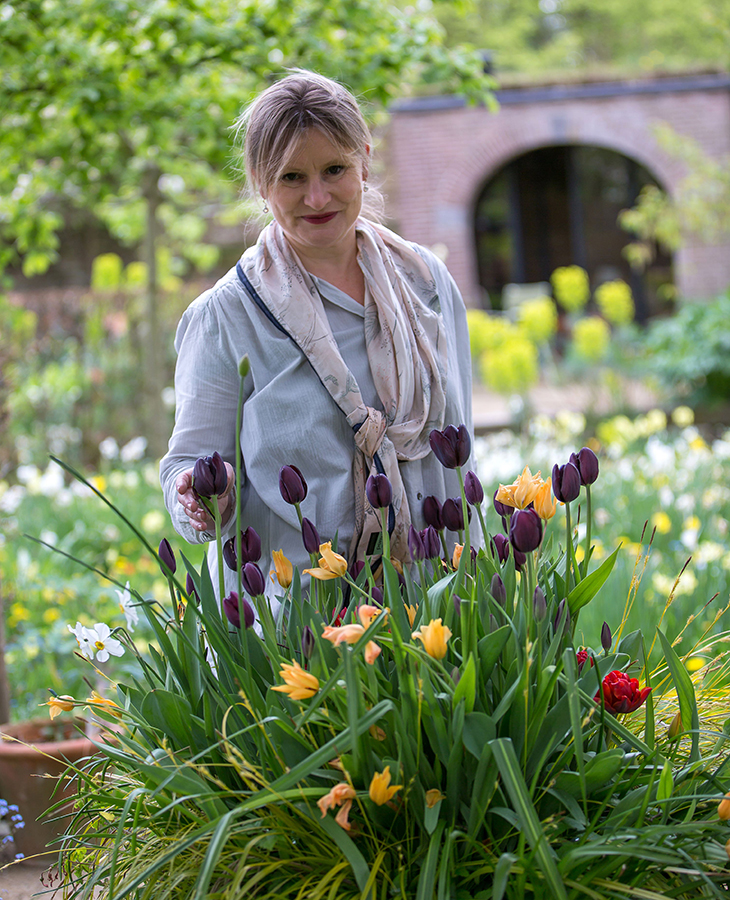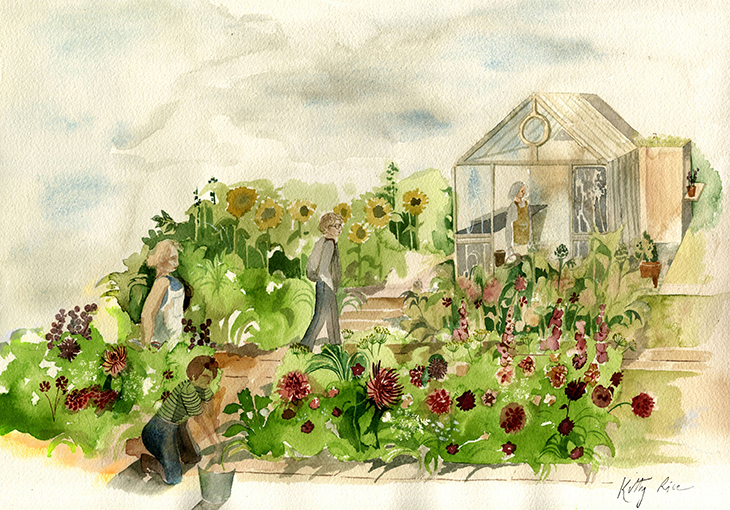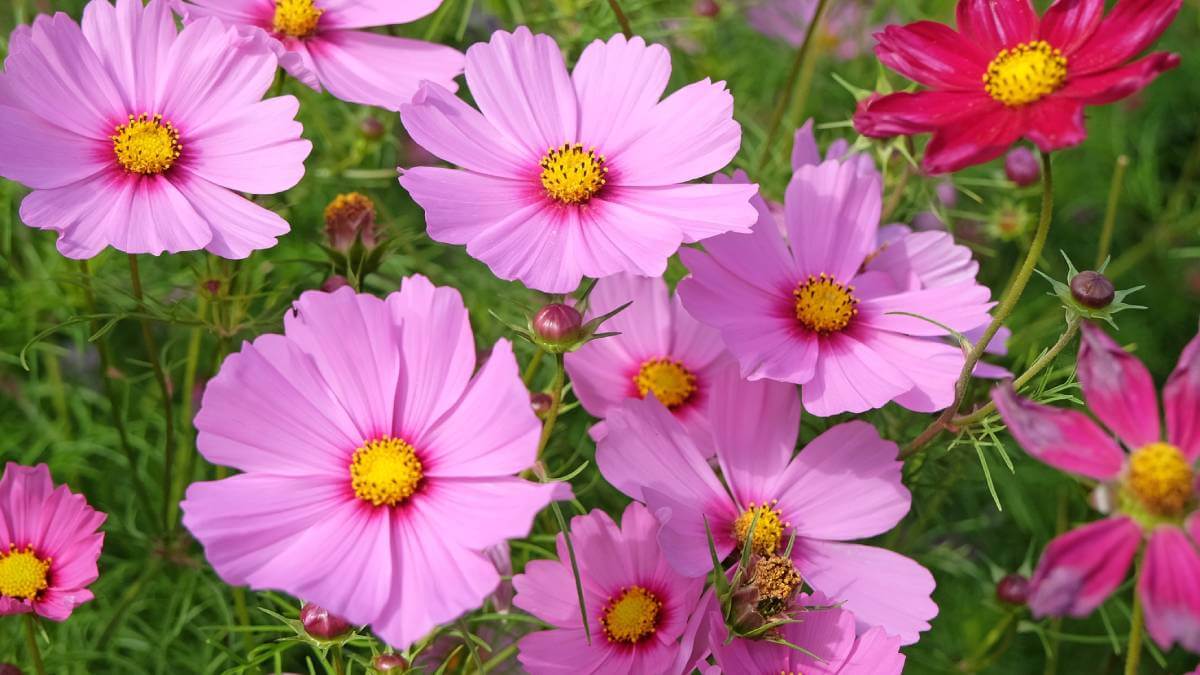A bunch of flowers in a jug on your desk, or sunnily arranged in the middle of the dining table, is a sure-fire way to inject brightness into your day. Even more so if said flowers are ones you’ve nurtured and fretted over from seed, and then (with a slight pang as the secateurs got to work) cut and arranged yourself.
Never felt that satisfied, slightly smug joy? It might be time to turn a portion of your plot – or even a pot on a balcony – into a cut flower garden.
Award-winning Dutch designer Carien van Boxtel shares her ultimate cut flower tips and tricks.
1. Buy dahlia tubers or sow them
For dramatic spreads of colour in summer and autumn dahlias are hard to beat.
They start to flower from around Christmas to early January, so you can plant them in October or November. It’s about eight weeks from planting to flowering and they come in many lovely shades including one that’s nearly black and some that are bicolour as well.
Dahlias last about a week inside as a cut flower; varieties with long stems make a lovely display.
“Dahlias are incredibly productive as cut flowers as they regrow in the same season following the principle known as ‘cut-and-come-again’, which means that if you keep on picking flowers, the plant will form new shoots and new flowers, as long as you keep on feeding, staking and watering it well,” says Ms Boxtel.
2. Sow Cosmos from seed
Cosmos should be your number one annual cut flower plant; they are delightful flowering annuals with delicate fern-like foliage and bright flowers.
“I have always found it unbelievable that this plant is never grown by the Dutch flower industry, as even my grandmother knew that with only one package of seed you could fill up many vases with ephemeral flowers in summer. They come in the best colours, including antique red, pristine white, lovely soft pinks and burgundies. There are now exciting new yellow and even salmon varieties too! The choice is endless,” says Ms Boxtel.
Cosmos thrive in dry hot sites, ideal for mass planting in exposed garden beds. Plant in spring and summer in most states and winter in northern states of Australia.
3. Sow annual grasses and amaranth in lots of colours
Grasses and amaranth are perfect fluffy fillers and will give any bunch of flowers a tremendous lift and airy volume. They are incredibly easy to grow, even straight into the soil.
There are many types of suitable grasses, which one you go for depends on the look you want. For fat, furry plumes, choose Pennisetum ‘Nafray’, a foxtail grass with fine, green foliage to 80cm and creamy plumes. Blue fescue grass (Festuca glauca) has blue-silver foliage in a neat tuft up to 20cm tall.
Tropical conditions are ideal for amaranth, but many varieties are frost hardy, so it is worth giving them a go in most regions of Australia.
“Interesting amaranth varieties include Amaranthus paniculatus ‘Oeschberg’ in burgundy with curvy floral spires, Amaranthus lividus subsp. lividus, a beautiful dark burgundy fast-growing foliage plant, Amaranthus cruentus ‘Hot Biscuits’ or ‘Kuferberg’ in copper and the more compact Amaranthus hypochondriacus ‘Pygmy Torch’,” says Ms Boxtel.
4. Consider Phacelia tanacetifolia
Not a cut flower per se but it is a beauty of a fast-growing and very hardy plant, and great for pollinators.
“I particularly love the fern-like foliage and the powdery blue flowers. They grow incredibly fast after you sow them in raked soil. If you keep on sowing them during the summer you can have beautiful foliage as well as flowers (and bees) in your cut flower garden in spring and summer,” says Ms Boxtel.

5. Don’t forget about perennials and herbs
Some of our most beloved garden plants also work well as cut flowers.
Some perennials, such as herbs, particularly well-established ones, really don’t mind the occasional haircut that much and can be a great addition to a cut flower garden.
Suitable options are sanguisorbas, alchemilla, peonia, rosemary, phlox, aster, lavendula, calamintha, and penstemon. Try to avoid compact varieties: look for longer stems. Perennial grasses such as pennisetum, molinia and miscanthus are such beautiful additions to any bunch of dahlias.
6. Roses are worth a punt
“Garden roses are not primarily bred for cutting, but in my eyes are far more beautiful, fragrant, wild and romantic than any bunch you can buy in a flower shop. I am particularly fond of the cream and soft pinks of smaller flowered roses like moschata hybrid ‘Easy to Cut’, modern varieties ‘Belgian Lace’, Dentelle de Bruges and antique pink and apricot Meilland rose ‘Acropolis’. Make sure the rose has pretty foliage too, as this will make your arrangement so much better,” says Ms Boxtel.

Do you grow your own cut flowers? Do you like having bunches of flowers around the house? Why not share your thoughts in the comments section below.
Also read: What’s wrong with my roses?
– With PA

